The most remote inhabited island in the world has become one of the biggest wildlife sanctuaries on the planet.

An Atlantic yellow-nosed albatross on a nest on Nightingale Island, part of the Tristan da Cunha group of islands. Image: Charles Bergman/ Shutterstock.com.
Tristan da Cunha is a chain of islands in the South Atlantic Ocean roughly midway between Africa and South America. It's a haven for tens of millions of seabirds, including albatross and penguins, plus whales, sharks and seals.
Almost 700,000 square kilometres of its waters will become a Marine Protection Zone and join the UK’s Blue Belt, becoming the largest no-take zone in the Atlantic and the fourth largest on the planet.
It means no damaging fishing or other extractive activities will be allowed across the area, although local fishermen will still be allowed to fish sustainably in order to feed the small island population.
Scientists at the Museum were part of the team which collected vital data that informed the decision to create a protected area. The work to get the green light for the protection zone was led by the Tristan da Cunha community.
Two joint Blue Belt Programme and British Antarctic Survey research cruises were completed in the area in 2018 and 2019, funded by the UK government, to find out exactly which animals and plants live in the waters around Tristan.
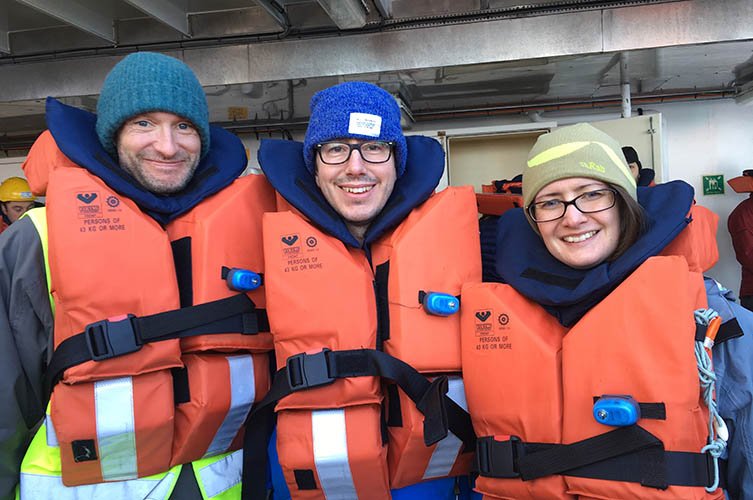
James Maclaine, Jon Ablett and Kirsty Lloyd on a scientific expedition to Tristan da Cunha
From the Museum, fish curator James Maclaine, mollusc curator Jon Ablett and molecular technician Kirsty Lloyd were all on board the second expedition. They found an incredible array of marine life - which is now safeguarded for the future by the new Marine Protection Zone.
It's part of the government's Blue Belt Programme, delivered by CEFAS (Centre for Environment, Fisheries and Aquaculture Science) and the MMO (Marine Management Organisation), which provides long-term protection for four million square kilometres of the rich marine environments around the UK's Overseas Territories.
Jon says, 'This no-take zone is fantastic news for marine life, and it took many people working together to make it happen. Lots of different types of researchers from taxonomists, ecologists and fisheries specialists to molecular specialists, water chemistry researchers and marine acoustic scientists have all collaborated with the islanders and fishermen to protect this precious area.'
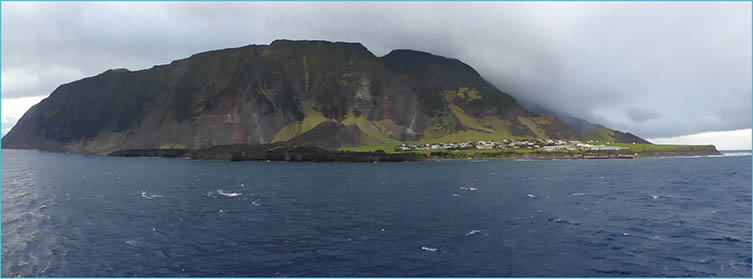
Tristan da Cunha is the most remote inhabited archipelago in the world
Life on Tristan da Cunha
Tristan da Cunha is an active volcano rising from the middle of the South Atlantic Ocean. One of the most remote places on Earth, it is home to just a few hundred people. There is no airport - it takes days to reach the islands by sea.
It's also a biodiversity hotspot, and lots of animals and plants that live around Tristan da Cunha are endemic, which means they are not found anywhere else on Earth.
The islanders rely on the sea for food and money. A lobster hatchery provides around 80% of the island's income, which will be allowed to continue under the new rules.
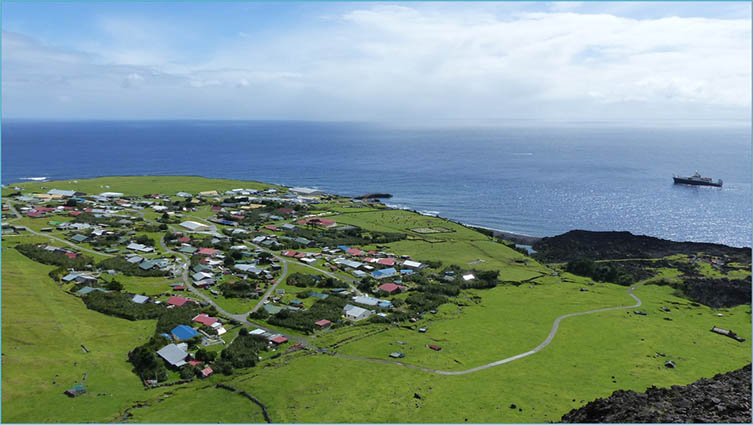
Just 250 people live on Tristan permanently, all British citizens
James Glass, Tristan da Cunha Chief Islander, says, 'Our life on Tristan da Cunha has always been based around our relationship with the sea, and that continues today. The Tristan community is deeply committed to conservation: on land, we've already declared protected status for more than half our territory.
'But the sea is our vital resource, for our economy and ultimately for our long-term survival. That’s why we're fully protecting 90% of our waters - and we're proud that we can play a key role in preserving the health of the oceans.'
Protecting life under the waves
Much of the Atlantic Ocean isn't protected in any way. Creating pockets of protection from fishing and other human activity is crucial, as it is estimated that banning fishing in 5% or more of the ocean will boost global fish catches by at least 20% in the future.
Bottom trawling is one of the most damaging forms of fishing, and it is soon to be banned around Tristan, along with tuna fishing.
It's thanks to science that decision makers were able to protect these islands.
The scientific expeditions to the area took huge samples from the ocean, pulling up nets full of animals for scientists to identify. It might sound destructive, but scientific trawls are designed to cause minimum disturbance. As well as that, it is vital that researchers understand exactly what's living in a particular part of the world so they can properly protect it.
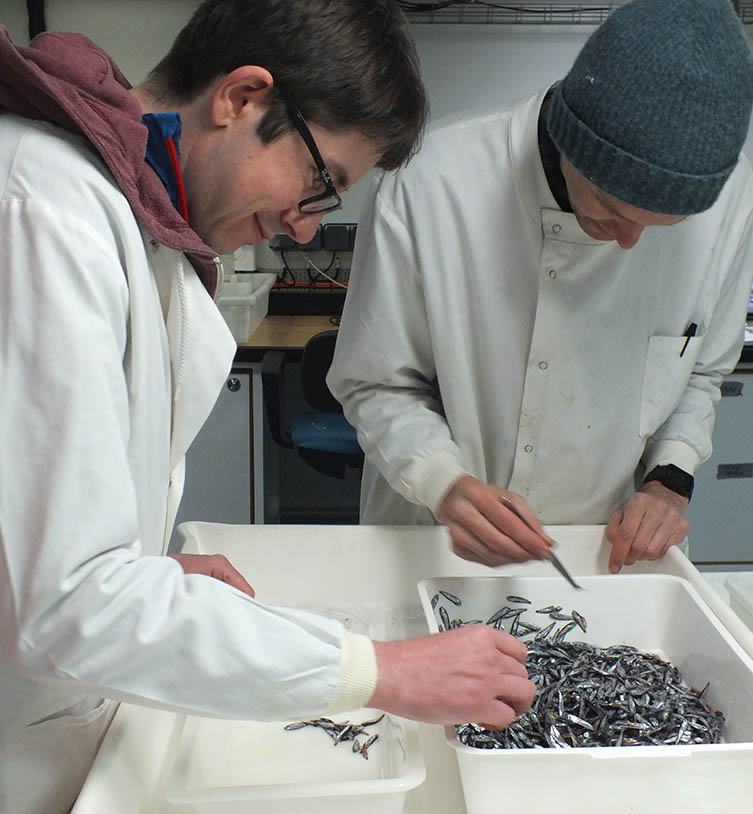
Jon and James sort through samples from a trawl.
Normally Kirsty Lloyd can be found working in the Museum's stores of frozen DNA, but during the 2019 research expedition she was the ship's biobanking technician.
Kirsty took tissue samples from the animals in each net that was pulled from the ocean and put them quickly into cold storage. They stayed cold for the duration of the journey home, and now the samples are held in the Museum's huge freezers as part of a project called Cryoarks, a national bank of frozen animal material.
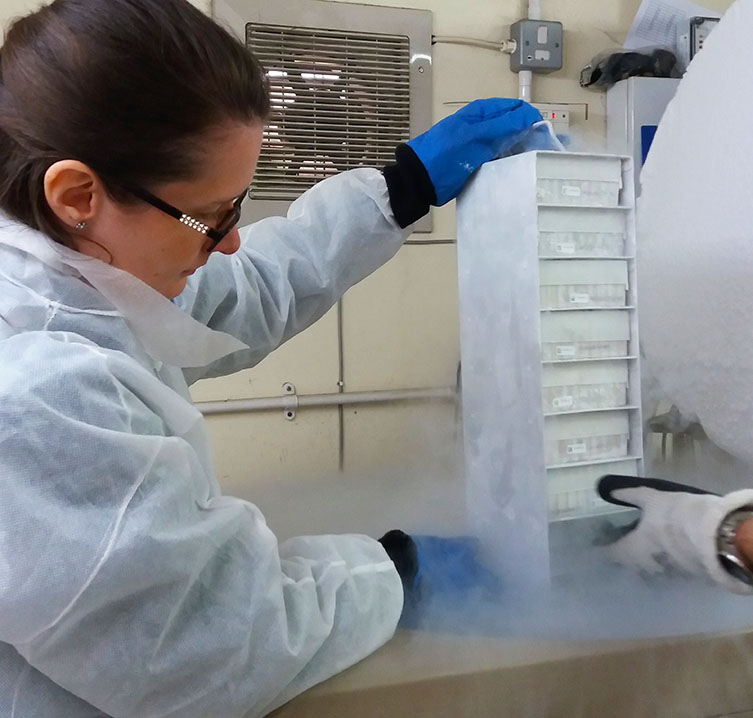
Kirsty Lloyd checks on frozen material in the Museum's labs. Samples are stored at -80°C.
It means that the Museum now holds genetic information about a huge range of molluscs, fish, crustaceans and other organisms that live around Tristan da Cunha. These are now preserved for use in future research.
Kirsty says, 'Getting these samples was a once-in-a-lifetime opportunity.
'The idea is if you keep the samples cold the quality is maintained. And now we have all these high-quality samples in the Museum's molecular facility available to the research and conservation community as part of CryoArks.'
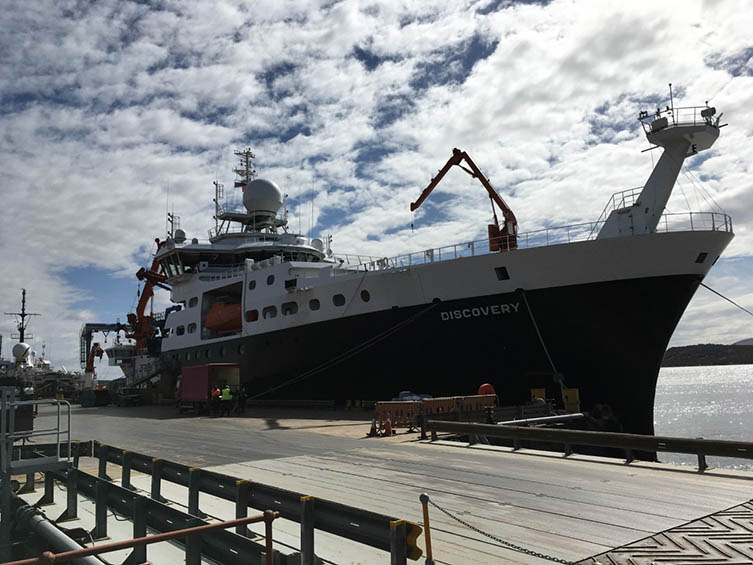
The RRS Discovery, which transported the scientists on their expeditions
While Kirsty was taking tissue samples, James and Jon were analysing which species of fish, squid and octopus were being pulled from the nets. Those animals were also safely brought back to the Museum, ready to be analysed by scientists.
During the 2018 and 2019 surveys, samples of plastic pollution were also gathered and the sea floor was mapped using pulses of sound.
Kirsty, James and Jon were able to show that the ocean around Tristan is full of a huge array of species.
They even found some rarely seen deep sea fish, including pelican eels, lanternfish, anglerfish, dragonfish and spookfish (below).
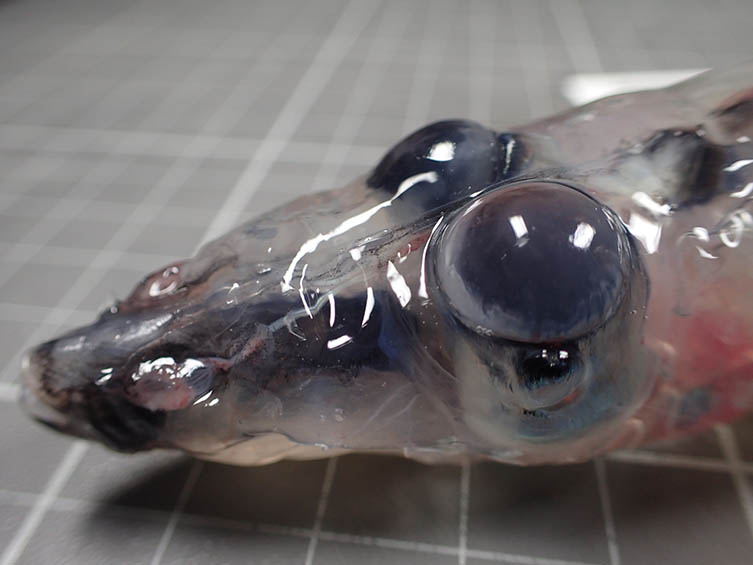
A spookfish from the waters around Tristan da Cunha, now preserved at the Museum for research.
Jon identified some unusual cephalopods including a piglet squid, a jewelled squid (below) and a vampire squid.
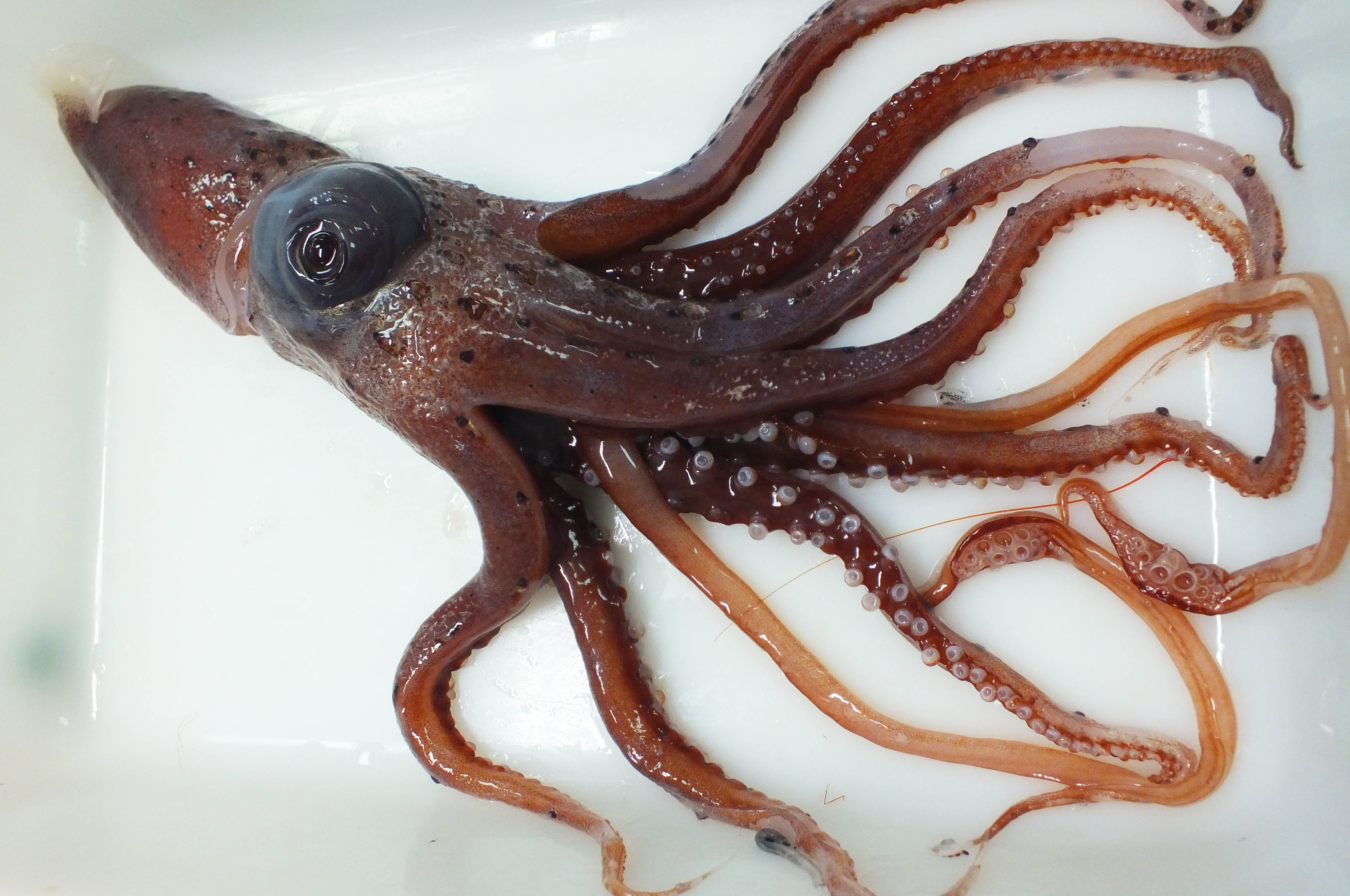
A jewelled squid specimen from one of the trawls (Stigmatoteuthis arcturi)
Kirsty says, 'It is fantastic that our work on the cruise was able to feed into a decision being made to protect Tristan.
'What's even more exciting is that these samples are now available for further research, they have created endless possibilities. Anyone can access and research them so the legacy of one expedition carries on for years.'
Jon added, 'We have a detailed snapshot of the ocean during a particular time. Now we know what the ocean was like in 2019, in 10, 50 or 100 years, scientists will be able to compare and contrast. They'll be able to see what has changed. So they'll learn how destructive certain types of fishing are, see how other human activity has an impact, watch what environmental change does to marine life.If you don't have good data to start with you, can't do any of that. The more evidence you can pass on to a governing body, the better.'
More information
- The Tristan da Cunha community made the declaration with support of an international partnership including the UK Government, RSPB, National Geographic Pristine Seas, Blue Nature Alliance, Becht Family Charitable Trust together with Blue Marine Foundation, Wyss Foundation, Kaltroco, Don Quixote II Foundation, British Antarctic Survey, University of Plymouth and the Natural History Museum.
- The scientific research missions were part-funded by the Blue Belt Programme and partly by a British Antarctic Survey's Overseas Development Assistance (ODA) project.
- Learn more about Cryoarks.


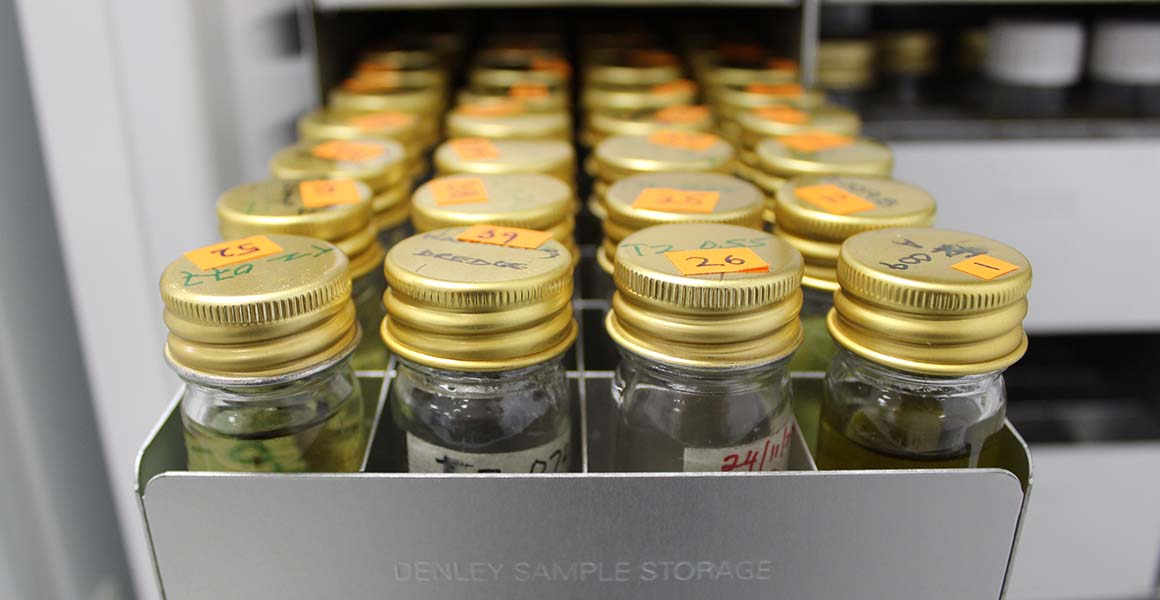
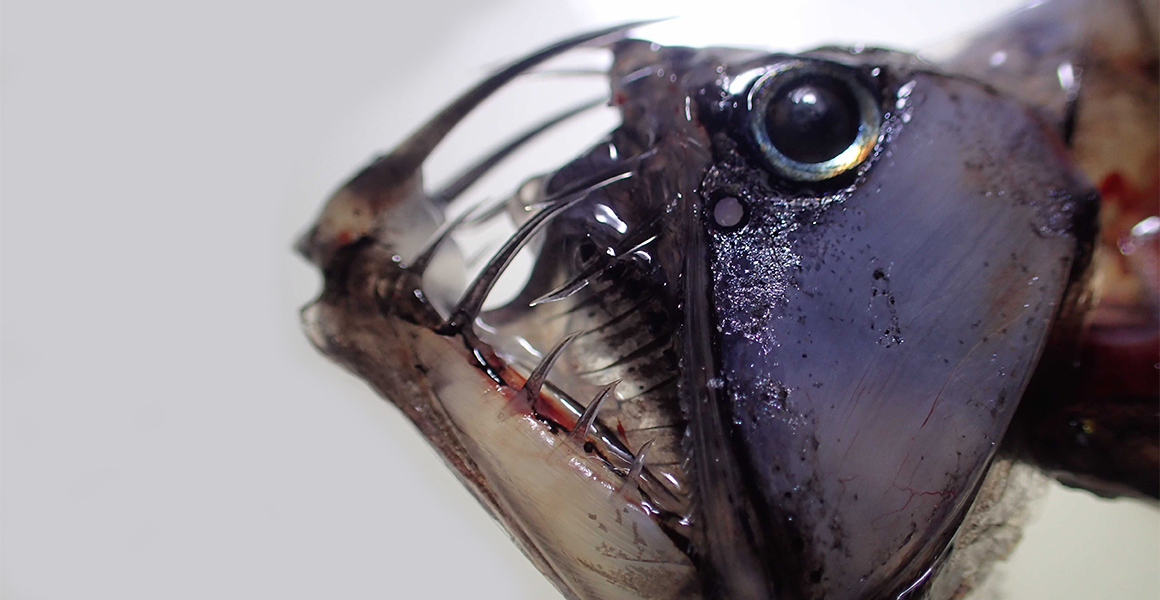
Don't miss a thing
Receive email updates about our news, science, exhibitions, events, products, services and fundraising activities. We may occasionally include third-party content from our corporate partners and other museums. We will not share your personal details with these third parties. You must be over the age of 13. Privacy notice.
Follow us on social media